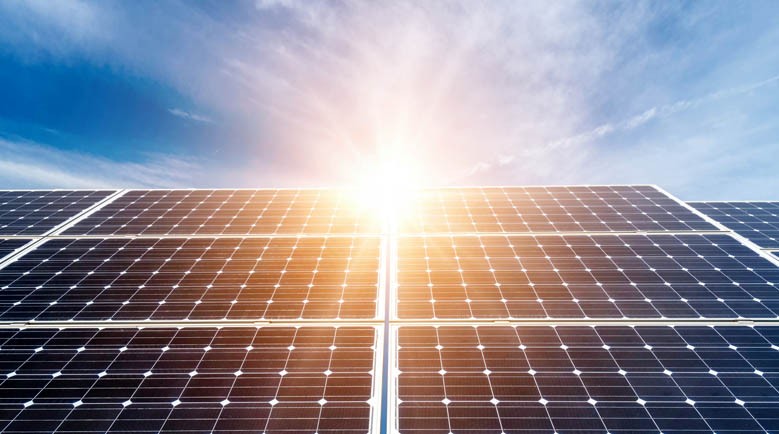
The government needs to launch a comprehensive programme to utilise the potential of renewable energy

Energy crisis and finding a viable solution for it constitutes an important contemporary debate in Pakistan today. It has a great bearing on all socio-economic developments that are currently taking place; thus, we need to come up with a viable solution that ensures a sustainable future.
The crisis has been persistent for more than a decade due to increasing population and heavy dependence on the imported fossil fuels. The electricity breakdown/blackouts is 14-18 hours in rural areas and 8-10 hours in urban areas (with some improvements over the recent months in certain areas). This situation has severely affected the residential, industrial and commercial sector of the country. This demands a comprehensive plan to jump start the economy that has long been halted primarily due to energy crisis.
It is a big challenge for the government to meet the ever growing power demand of the country; hence, efforts have been made to increase reliance on renewable energy by providing incentives for the prospective investors. Pakistan is fortunate to have tremendous potential in renewable energy sources such as solar, wind, hydro and biomass etc.
Starting off with bio mass, the 81 million ton/annum biomass production has a huge potential to produce enough bio-energy that can bring a decent improvement to the households that are not connected to the grid. Combustion, gasification, pyrolysis, trans-esterification process are some of the already existing technologies that can be used to harness this energy. The dung from 72 million animals (cows and buffalos) and available poultry droppings from 785 million poultry birds can produce considerable biogas to produce heat and electricity.
Similarly, we can also turn towards solar energy. In Pakistan, solar radiation is in the range of 5kWh per m2 per day. The annual sunshine duration of 8-10 hours a day makes it an ideal place to harness the sun’s rays. This potential can be observed from the drastic rise in roof-top solar panels. For the grid-connected solar projects, lots of pieces are coming together like regulation, tariffs, investments and grid capacity.
Most regions in eastern Sindh (Thar desert), South Punjab and Central/South Balochistan tend to receive consistent and cloud-free days throughout the year making them the ideal locations for such a project. Solar energy tends to be a great alternative to fossil fuels. Solar energy is an excellent off grid and relatively inexpensive solution that can also minimise Pakistan’s carbon footprint. The cost of installing a solar panel was once high but now per KW cost has reduced considerably and tariffs offered to the prospective investors have been reduced from earlier ---Cents 17/kWh to Cents 6/kWh -- in just four years.
Once solar power is up and running, you will enjoy the benefits for many years, while requiring minimum basic maintenance like cleaning of dust form the panel. Periodic battery replacement cost is the only major impediment left which is expected to be overcome considering the pace of development.
Wind power has tremendous scope in Pakistan. Wind speed of 6 to 8.5 m/s persists in the coastal regions of Sindh and Balochistan provinces with more than 20,000 MW of economically feasible wind power potential. Although the figures may be variable, and not completely attainable in the short run, there is still a lot that it can give to the surrounding rural areas that do not have adequate provision of electricity. Currently, more than 1200 MW worth projects are at different stages of development.
Pakistan is one of those countries of the world that are blessed with huge hydro power potential. The geographic layout of the country, the natural water flow systems and irrigation system in the country manifest hydro power potential that can be harnessed to meet the increasing energy needs of the country. Unfortunately, due to the lack of finances, large scale projects are not always feasible for which we can turn towards mini-hydro projects.
According to the Alternative Energy Development Board of Pakistan, we have 3100MW of energy potential that we can harness. Not only are such projects relatively cheap to make but they can be built in a shorter period of time especially in areas that are hard to access (and provide the necessary equipment). Besides this, it ensures a low maintenance cost combined with employment opportunities in various rural settlements throughout northern Pakistan. Such projects tend to be ideal for countries such as Pakistan that have the geographical conditions but not enough finances to harness the energy.
These are some of the many alternatives to fossil fuels, such as coal or oil. Pakistan’s carbon foot print is already low thanks to our over reliance on domestic gas (which is a much cleaner fuel than coal) in residential, commercial, industrial and now transportation sector. However, recently, the government has approved various imported coal-based power plants. Initiatives in renewable energy could considerably circumvent the coal’s negative effect on environment in future. This reduction of coal and oil consumption benefits the situation of global warming and global climate change. By reducing the consumption of fossil fuels we also improve the quality of the air affecting the quality of life.
In the larger picture, Pakistan is still lacking in adaptation to these technologies in comparison to the worldwide utilisation of renewable energy. For a start, we need to launch a comprehensive programme for research and development, commercialisation and awareness in the community by incentivising the wide scale adaptation of renewable energy technologies for a more sustainable energy supply in the near future. This will ensure a self-sufficient Pakistan producing a great chunk of its energy from local resources and thus cutting down on imports and leading to a better economy.